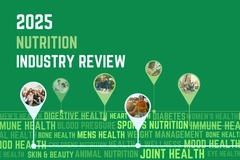Rowett Research Institute aims to help improve the health-promoting properties of meat and milk.

A project will explore how the millions of microorganisms present in the rumen (the first stomach of cows and sheep) interact to affect the fat content of meat.
27/01/05 Scientists at Aberdeen’s Rowett Research Institute have received funding of over £200k from the Scottish Executive to help improve the health-promoting properties of meat and milk. The project will explore how the millions of microorganisms present in the rumen (the first stomach of cows and sheep) interact to affect the fat content of meat. It is hoped that a detailed understanding of the metabolism of these bugs can be harnessed to increase the levels of health-promoting types of fat present in red meat. The research at the Rowett is complemented by funding from the BBSRC for scientists working at a Welsh research institute, the Institute of Grassland and Environmental Research (IGER) at Aberystwyth.
Red meat can make an important contribution to a varied diet as it is a good source of iron, B vitamins and protein, but it also contains relatively large amounts of saturated fat, which nutritionists recommend we should be cutting-down on.
Set against this, red meat also contains amounts of the so-called healthy fats (n-3 fatty acids and conjugated linoleic acids, CLA). The challenge is to increase the healthier fats, and decrease the amount of saturated fat.
“The saturated fats are made in the cow`s stomach, which in essence is a huge fermentation vat as big as a barrel of beer. Our research has shown that it`s possible to control the microorganisms in the cow`s stomach to make healthier fatty acids,” said Dr John Wallace, who is leading the study at the Rowett Institute. “We know from feeding experiments carried out by our colleagues in Wales that you can change the fat content of beef by feeding foods such as linseed, fish oil or grass. Up until now it has not been possible to relate these changes to specific types of bugs in the rumen. It is only because of the advent of modern molecular techniques that we will be able to gain a detailed knowledge of who does what, and how, in the world of the rumen microorganisms. We hope that the knowledge gained will lead to better advice for farmers on how to feed their cows and sheep to get improved meat quality and health benefits for all.”
The type of fat that is found in the meat and milk is not related to the fat that is eaten by the animal in its diet. The forage the animal eats is broken down by the millions of microorganisms in the animal’s first stomach or rumen, which is like a large fermentation vat. In the rumen, the bugs are responsible for considerable changes to the structure of the fats.
Unsaturated fats which are eaten by the animal are converted into saturated fats by the bugs using a chemical process called biohydrogenation. This process also produces the healthier CLA at one point in the chain of reactions, so making healthier meat isn’t just a case of blocking the biohydogenation process, it’s much more complex than that and involves several different species of microorganisms.












